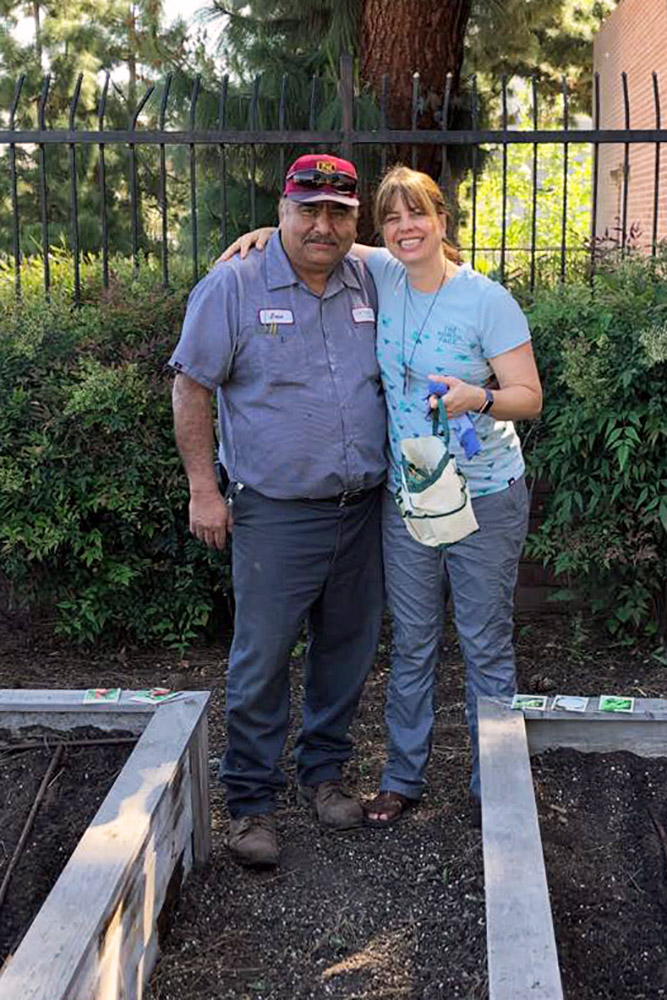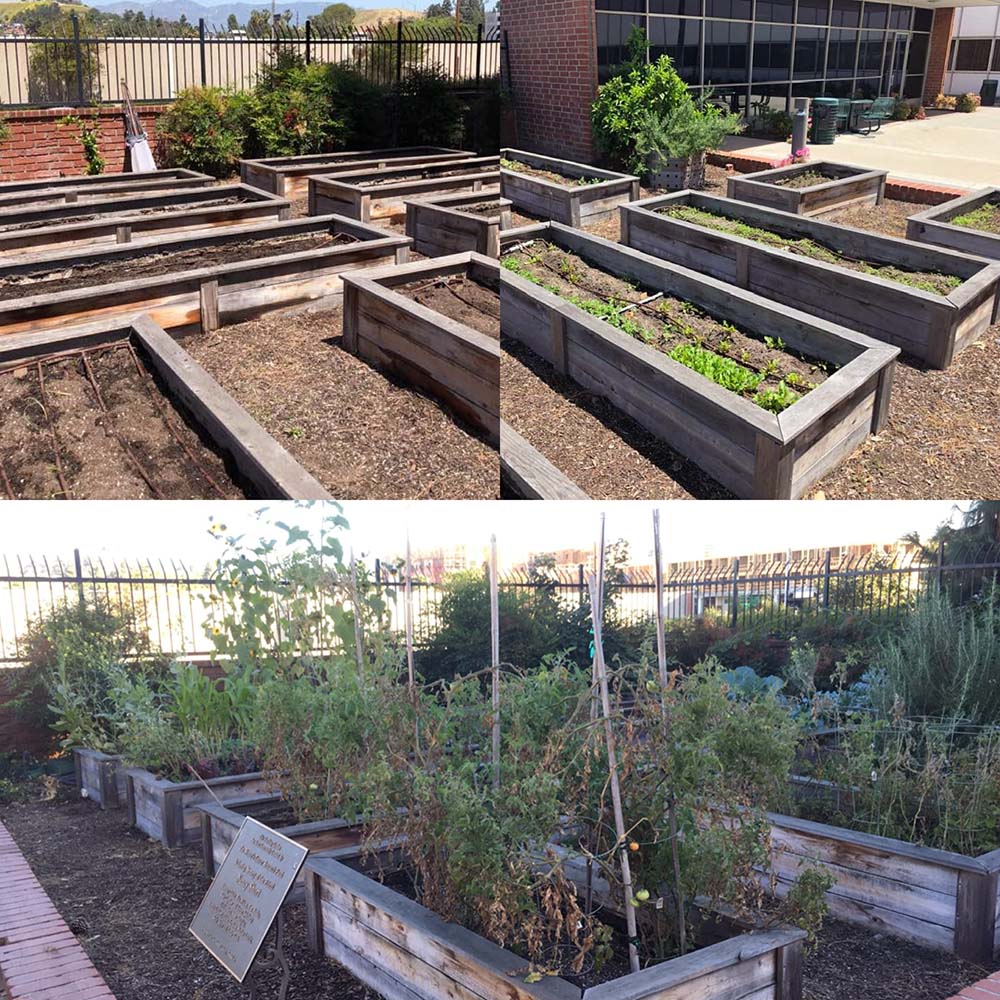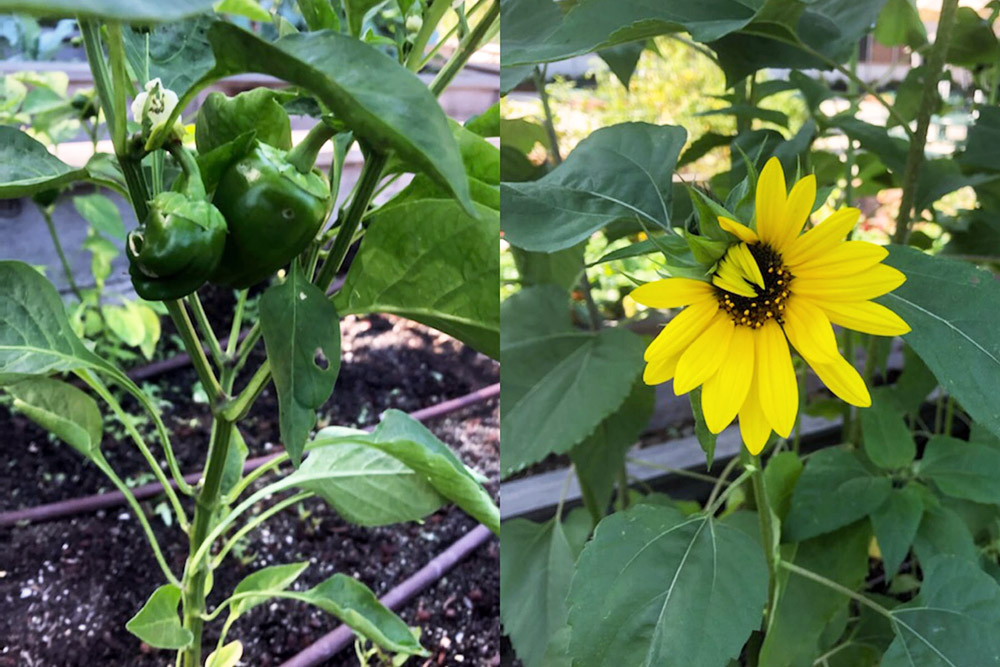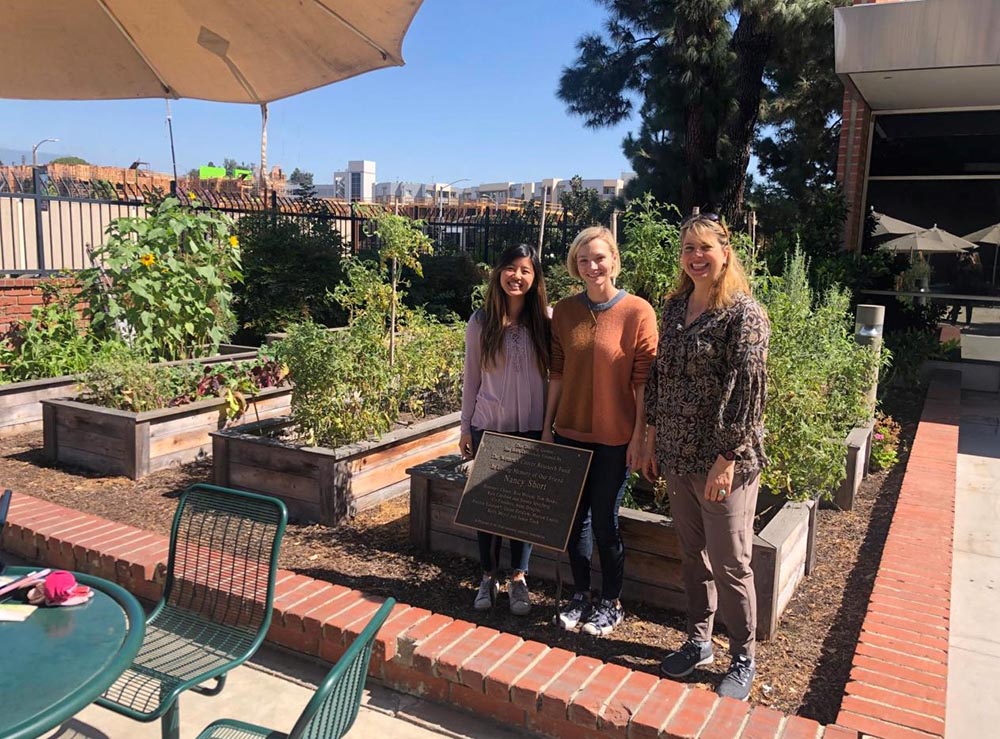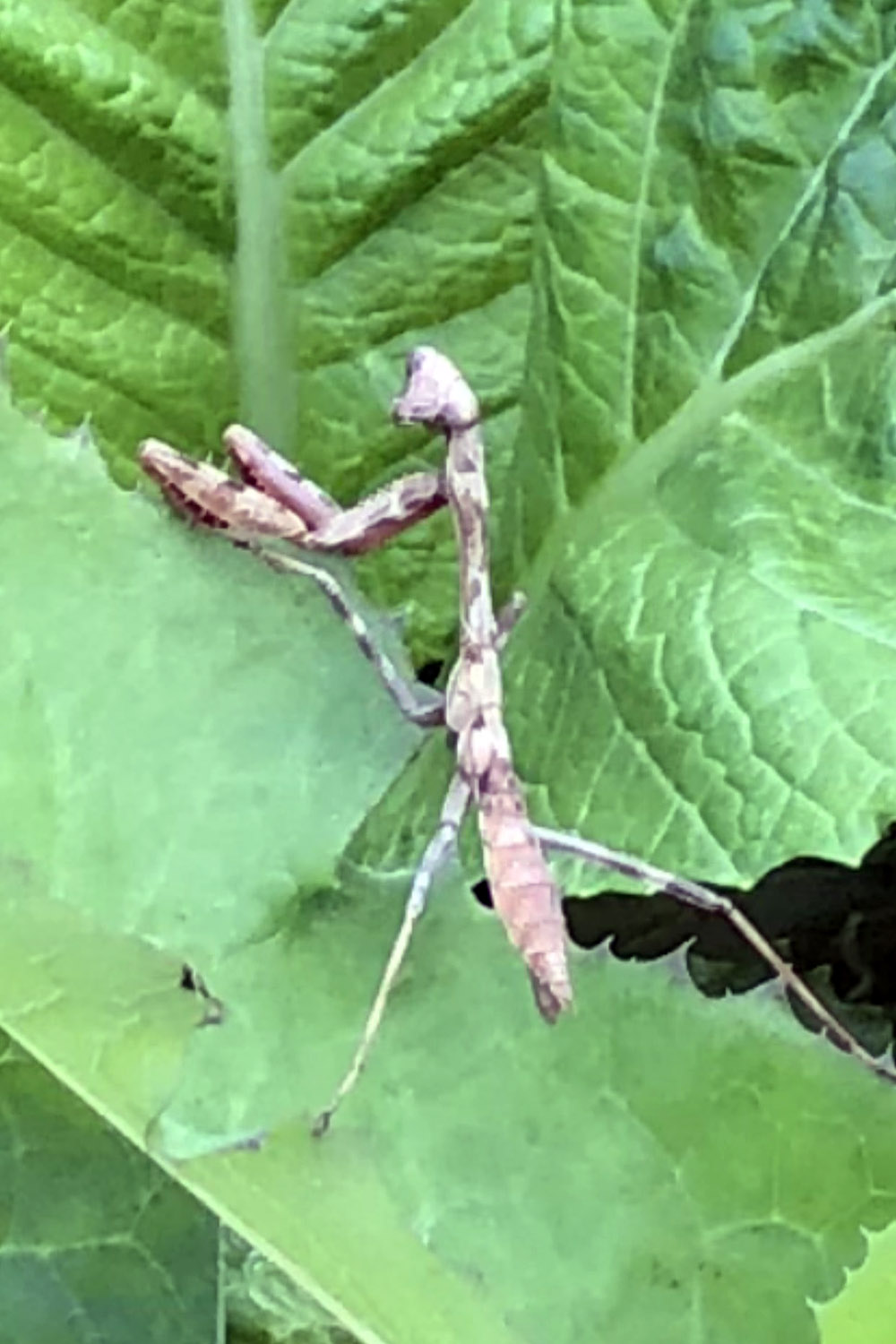The garden of life at CHP
November 6, 2019
By revitalizing a forgotten garden, one USC student learned to grow so much more
Walk out on the Center for the Health Professions (CHP) building patio shared by USC’s occupational therapy, physical therapy and pharmacy programs, and you will see eight thriving garden beds. Growing more than 20 different vegetables, herbs, fruits including five varieties of tomatoes, sunflowers and more, the patio allotment brings joy to faculty, staff and students alike. However, this garden wasn’t always quite so green.
Reinvigorating a forgotten place
In June 2018, entry-level master’s student Maria Cristina Jiménez MA ’20 walked out onto the patio before her first class at USC to the sight of eight empty raised beds.
“As months passed, I would walk by it and wonder, ‘there ought to be vegetables there,’” Jiménez says.
USC Chan faculty members Stacey Schepens Neimiec and Samia Rafeedie helped to connect Jiménez with the gifts staff at Keck Hospital of USC. Years ago, the Women’s Cancer Research Fund had facilitated an initial donation of the since neglected teaching garden. With their blessing, Jiménez’s gardening journey began.
She asked her friend, a gardening expert, for some tips. She met with Jose Lopez and Sylvester Lucas, USC Landscape Shop staff members responsible for grounds maintenance at the USC Health Sciences Campus, who taught her how to plant a seed.
Jiménez started with some organic heirloom, non-GMO vegetable seeds and spent a couple of hours planting everything up. The garden does not need to be watered by hand because it has automatic drip irrigation tubing. In April 2019, after much patience and anticipation, the garden began to sprout.
Creating a garden of remembrance
During the summer of 2019, Jiménez was a classroom assistant for two courses taught to USC Chan’s incoming entry-level master’s students. She discovered that two of her new students had each recently lost a parent before beginning graduate school, and each asked if they could plant something in remembrance of their loved ones. Riley McGuire MA ’21 wanted to plant peppers in her father’s memory and Katherine Tao MA ’21 planted sunflowers, her mother’s favorite.
“My dad was known for his love of spicy food, so I wanted to plant something that represented him,” McGuire says. “I felt like planting the seeds was putting a small part of him back into the Earth and allowing it to grow. He tried so hard to grow things in our backyard, but it never seemed to work out, so it was kind of a way that I could finish something he started.”
Tao’s family leads a strong spiritual life, and she sees meaning in this garden beyond the here and now.
“I planted sunflowers in remembrance of my mom because she was filled with joy, warmth and a vibrant love for Jesus,” Tao says. “When I see the sunflowers in the garden, it’s a happy reminder that my mom lived as a bright light in this world and that her life continues on in eternity with God.”
More students wanted to get involved, and asked about planting even more vegetables and herbs. What once was bare and empty was transformed to something with profound meaning and value. Now, both Tao and McGuire help Jiménez maintain the garden.
An even broader impact
Gardening is a great way to increase the Earth’s sustainability, and with the overall environment and ecosystem becoming a greater concern for future generations, it can be a valuable occupation to engage in, even just as a hobby. Asked for advice about starting and maintaining your own garden, Jiménez explains the greater life lessons that gardening has to offer.
“Sometimes things don’t grow, and that is hard,” Jiménez says. “Gardening will teach you patience, it will teach you to pay attention, it will give you hope about life. It will also make you strong, as often, you have to cut plants once they start to flower, and you become a bit ruthless in shearing away. But then the plant responds and starts growing again, and you feel OK.”
Jiménez often stops by the garden between classes to marvel over plants that grow through their life cycle in no hurry.
“There’s a praying mantis that likes to hang out by the top of the sunflowers, and she and I look at each other — we both love those sunflowers.”
As the garden continues to grow and thrive, it’s exciting to imagine what it might bring to future Trojans. Many of the vegetables, such as kale, tomatoes and Swiss chard, are now ready for harvesting. Although occupational therapy was not the original intention of revitalizing the garden, Jiménez has offered to bring some of its vegetables to her mental health fieldwork site.
Fellow classmates often ask Jiménez what initially inspired her to tend to the garden. Was it for class, for an OTD project, or for course credit?
“Here in graduate school, we are so used to doing things for a reason,” she says. “I created the garden because I wanted to see beauty, and do something in graduate school just for the sake of my and my fellow classmates’ enjoyment.”
⋯
Next by tag Health and Wellness ⟩ Students ⟩






